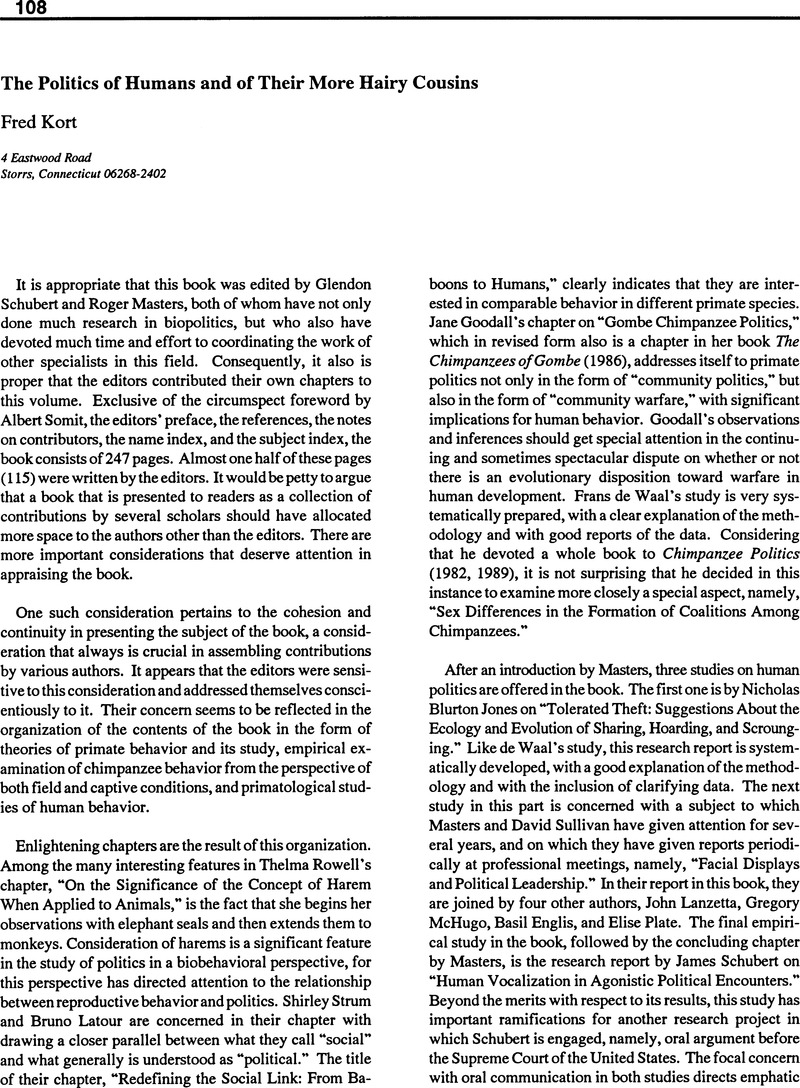No CrossRef data available.
Article contents
The Politics of Humans and of Their More Hairy Cousins
Published online by Cambridge University Press: 17 May 2016
Abstract
An abstract is not available for this content so a preview has been provided. Please use the Get access link above for information on how to access this content.

- Type
- Book Reviews
- Information
- Copyright
- Copyright © Association for Politics and the Life Sciences
References
de Waal, F.B.M.(1982,1989). Chimpanzee Politics: Power and Sex Among Apes. London: Jonathan Cape.Google Scholar
Geschwind, N.(1979). “Specializations of the Human Brain.” Scientific American 241: 180–199.Google Scholar
Ginsburg, B.E.(1988). “Ontogeny, Social Experience, and Serotonergic Functioning.” Paper presented at the Conference on Serotonin, Social Behavior, and the Law. Dartmouth College, Hanover, NH.Google Scholar
Goodall, J.(1983). “Order Without Law.” In Gruter, M.and Bohannan, P.(eds.), Law, Biology and Culture. Santa Barbara, CA: Ross-Erikson.Google Scholar
Goodall, J.(1986). The Chimpanzees of Gombe: Patterns of Behavior. Cambridge, MA: Harvard University Press.Google Scholar
Kling, A.S.(1986). “Neurobiological Correlates of Social Behavior.” In Gruter, M.and Master, R. D.(eds.), Ostracism: A Social and Biological Phenomenon. New York: Elsevier Science Publishing Company.Google Scholar
MacLean, P.D.(1983). “A Triangular Brief on the Evolution of Brain and Law.” In Gruter, M.and Bohannan, P.(eds.), Law, Biology and Culture. Santa Barbara, CA: Ross-Erikson.Google Scholar
McGuire, M.T.and Raleigh, M.J.. (1986). “Behavioral and Physiological Correlates of Ostracism.” In Gruter, M.and Masters, R. D.(eds.), Ostracism: A Social and Biological Phenomenon. New York: Elsevier Science Publishing CompanyGoogle Scholar


